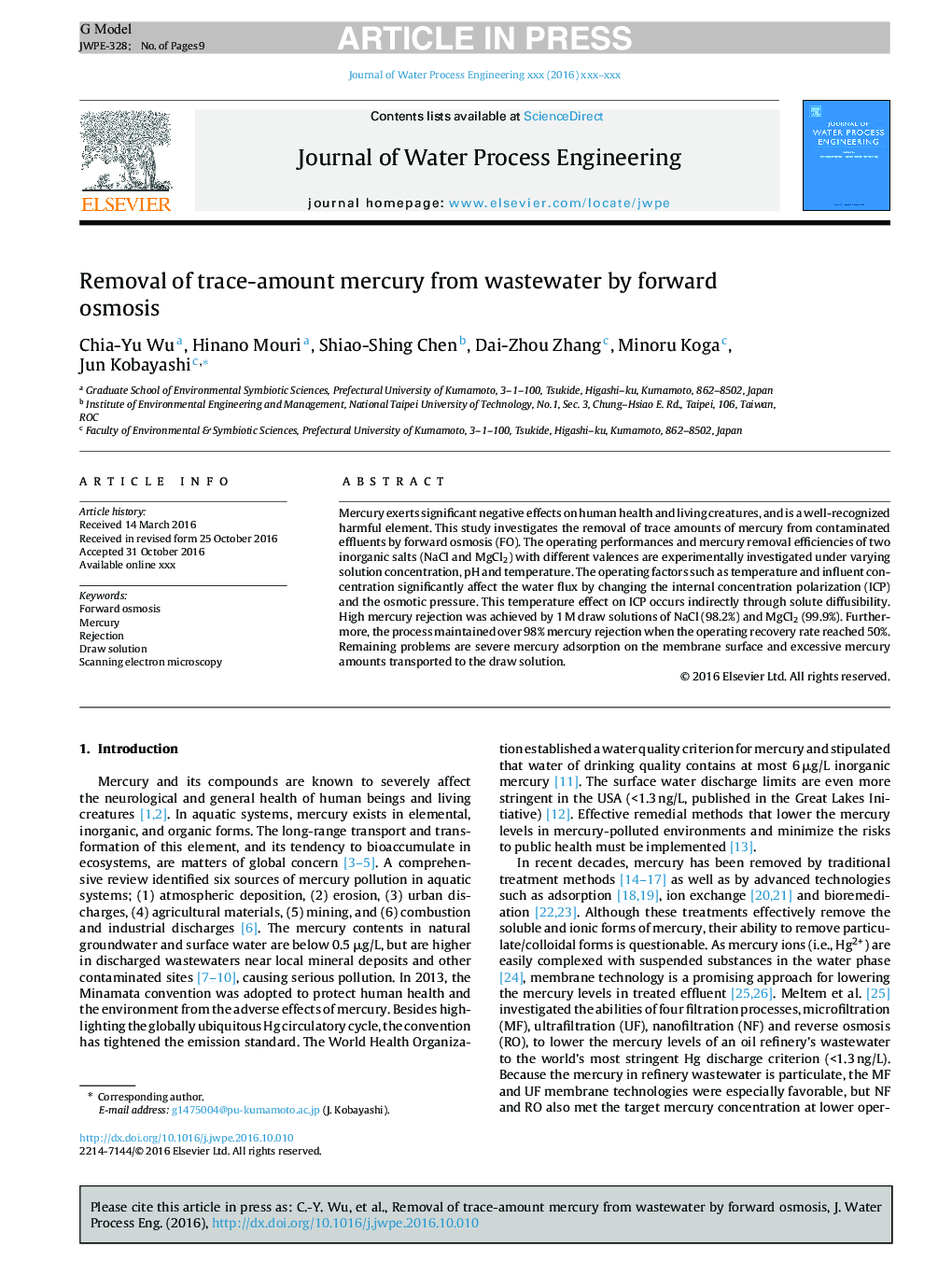| Article ID | Journal | Published Year | Pages | File Type |
|---|---|---|---|---|
| 4910018 | Journal of Water Process Engineering | 2016 | 9 Pages |
Abstract
Mercury exerts significant negative effects on human health and living creatures, and is a well-recognized harmful element. This study investigates the removal of trace amounts of mercury from contaminated effluents by forward osmosis (FO). The operating performances and mercury removal efficiencies of two inorganic salts (NaCl and MgCl2) with different valences are experimentally investigated under varying solution concentration, pH and temperature. The operating factors such as temperature and influent concentration significantly affect the water flux by changing the internal concentration polarization (ICP) and the osmotic pressure. This temperature effect on ICP occurs indirectly through solute diffusibility. High mercury rejection was achieved by 1Â M draw solutions of NaCl (98.2%) and MgCl2 (99.9%). Furthermore, the process maintained over 98% mercury rejection when the operating recovery rate reached 50%. Remaining problems are severe mercury adsorption on the membrane surface and excessive mercury amounts transported to the draw solution.
Related Topics
Physical Sciences and Engineering
Chemical Engineering
Chemical Engineering (General)
Authors
Chia-Yu Wu, Hinano Mouri, Shiao-Shing Chen, Dai-Zhou Zhang, Minoru Koga, Jun Kobayashi,
